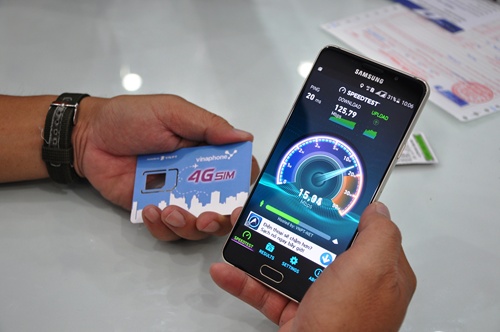4G Licensing in Vietnam: A Critical Step Forward
— July 22, 2016
Vietnam Enters the 4G Era
In July 2016, the Vietnamese government signaled a significant step forward in the country’s telecommunications and technological development. The Minister of Information and Communications, Truong Minh Tuan, urged enterprises to submit recent reports on 4G testing results as the government prepared to expedite the licensing process for 4G in the third quarter of 2016. This move was part of a broader strategy to boost the country’s digital infrastructure and enable faster, more efficient communication networks.
The urgency in licensing 4G came as the government acknowledged its critical role in the development of various sectors, particularly in supporting e-Government initiatives, the Internet of Things (IoT), and modern information systems across cities and provinces in Vietnam. By laying a strong foundation in telecommunications, the government aimed to pave the way for smarter, more interconnected services. As the world shifted towards faster and more reliable mobile networks, Vietnam was positioned to take advantage of these advancements to drive its digital transformation.
Accelerating the Licensing Process
The Ministry of Information and Communications (MIC) organized a review meeting in early July 2016 to assess the progress of its initiatives for the first half of the year. The meeting served as an opportunity for stakeholders to discuss the ongoing developments and challenges facing the telecommunications sector, particularly the rollout of 4G technology.
There was growing pressure from various enterprises and local authorities to accelerate the process of granting 4G licenses. These entities recognized the potential of 4G networks to support critical digital infrastructure, particularly for government services and IoT applications. Many saw 4G as an essential tool for developing smart cities and enhancing public sector operations. As the government pushed for faster digital transformation, the swift licensing of 4G was viewed as a key enabler.
Three of Vietnam’s major telecommunication providers—Viettel, VNPT, and MobiFone—had already begun piloting 4G technology in selected regions of the country. The trials were scheduled to conclude by October 23, 2016, marking an important milestone in the country’s telecom evolution. However, the Ministry of Information and Communications, particularly through the Vietnam Telecommunication Authority (VNTA), recognized the urgency and requested that these companies submit their testing results ahead of the scheduled end date. The VNTA aimed to fast-track the evaluation process and issue the necessary licenses sooner, ensuring that 4G services could be fully operational and accessible nationwide as quickly as possible.
Strategic Collaboration Between Government and Enterprises
To facilitate the quick rollout of 4G in Vietnam, the MIC adopted a collaborative approach with telecommunication companies. Enterprises were encouraged to submit their testing reports to provide the government with comprehensive data on the technology’s performance. These reports were essential to evaluating the quality of 4G services and ensuring that the technology could meet the demands of the Vietnamese market. By working closely with enterprises, the government aimed to speed up the licensing process while ensuring that the implementation of 4G technology adhered to high standards of quality and reliability.
The process involved not only technical assessments but also a review of regulatory and legal documentation. After receiving the test results, the MIC and VNTA planned to work directly with the companies to finalize the necessary paperwork for the licenses. This close cooperation was intended to streamline the approval process and reduce any administrative delays that could hinder the introduction of 4G technology.
The early submission of testing results also allowed the MIC to identify and address any potential issues early in the process. By evaluating the results from various telecommunication companies, the government aimed to ensure that the 4G network could meet the expectations of users in both urban and rural areas, promoting equitable access to high-speed internet services.
Telecommunications Sector Growth
The Ministry of Information and Communications also reported on the overall performance of Vietnam’s telecommunications sector. In the first half of 2016, the sector generated a total revenue of VND 93.5 trillion, a solid indicator of the growing demand for telecommunications services in the country. This revenue highlighted the importance of the telecommunications industry in Vietnam’s economy and its role in supporting the country’s digital infrastructure.
By the end of June 2016, there were 84 million 2G subscriptions nationwide, while 3G subscriptions reached 38 million. The data showed a clear shift in consumer preferences from 2G to 3G services. The continued growth in 3G subscriptions was a positive indicator that users were becoming more reliant on mobile internet services, a trend that would set the stage for the eventual rollout of 4G networks.
Despite the steady rise in 3G subscriptions, the number of 2G subscriptions had started to decline. This shift in usage patterns reflected the growing demand for faster, more efficient mobile internet connections. As more users upgraded to 3G, the need for 4G services became even more apparent, further justifying the government’s push to expedite the licensing process for 4G technology.
Domain Growth and Vietnam’s Digital Ecosystem
Alongside the push for 4G technology, Vietnam’s digital ecosystem saw significant growth in other areas. The Ministry of Information and Communications reported that the total number of “.vn” domain names had reached 366,000 by mid-2016. This number had been steadily increasing as businesses and individuals in Vietnam recognized the importance of having a local domain for their websites and digital services.
The first five months of 2016 also saw a surge in newly registered “.vn” domain names, with 40,000 new registrations bringing the total number to 900,000. This growth in domain registrations was a clear indication of the expanding digital presence in Vietnam, as more companies and individuals looked to establish their online footprint. A local domain such as “.vn” offered both recognition and credibility within the Vietnamese market, which was becoming increasingly important as the country’s digital economy grew.
Additionally, the export revenue from telephones and components reached $14.3 billion in the first five months of 2016, marking a 19% increase from the previous year. This growth reflected Vietnam’s role as an important hub in the global supply chain for electronics and telecommunications equipment. Export revenue from electronics, computers, and components also showed positive growth, reaching $6.38 billion in the same period, a 6% increase compared to the previous year.
Vietnam’s growing digital infrastructure, coupled with its strong export performance in technology and electronics, positioned the country as an emerging player in the global digital economy. This growth was supported by advancements in telecommunications, such as the introduction of 4G, which helped drive demand for mobile and internet-based services.
The Future of Telecommunications in Vietnam
The introduction of 4G technology in Vietnam was expected to serve as a catalyst for the next phase of the country’s digital transformation. With the government’s proactive approach to licensing 4G and its support for telecom companies in deploying the necessary infrastructure, Vietnam was set to embrace a more connected future. By expanding access to high-speed internet, 4G networks would enable a host of new opportunities for businesses, government services, and consumers alike.
As Vietnamese telecommunication companies continued to pilot 4G services and prepare for full deployment, the industry was bracing for an even greater shift toward mobile internet and digital services. The increased availability of 4G services would likely lead to a surge in mobile application services, further accelerating the growth of Vietnam’s digital economy.
For businesses in the technology and outsourcing sectors, such as S3Corp, the introduction of 4G networks presented new opportunities for mobile development, web applications, and cloud-based services. As 4G networks became more widespread, businesses could leverage the enhanced connectivity to deliver faster, more reliable services to clients, both within Vietnam and globally.
Vietnam’s efforts to promote 4G licensing and strengthen its telecommunications infrastructure are vital steps toward ensuring the country remains competitive in an increasingly digital world. By embracing advanced technologies and supporting innovation, Vietnam is positioning itself for long-term success in the global digital economy.




